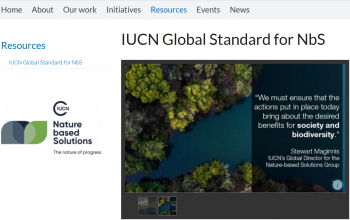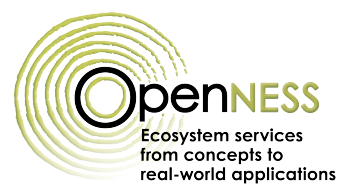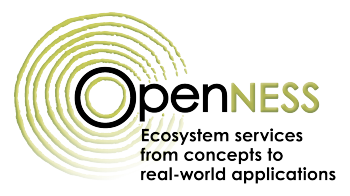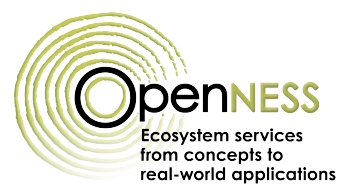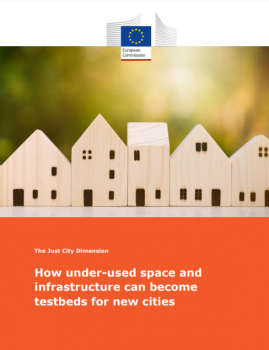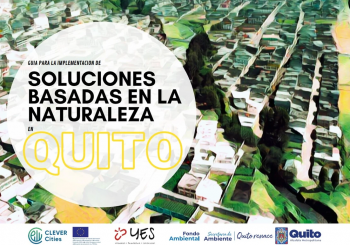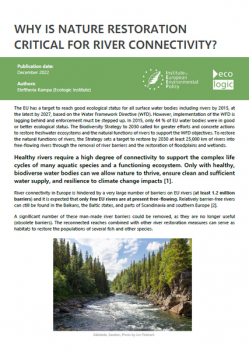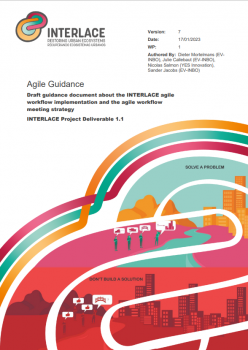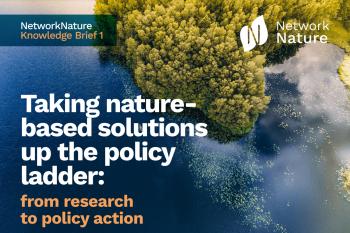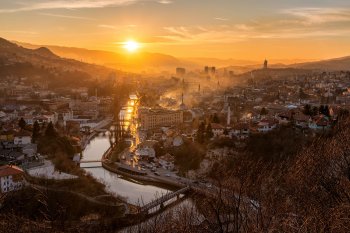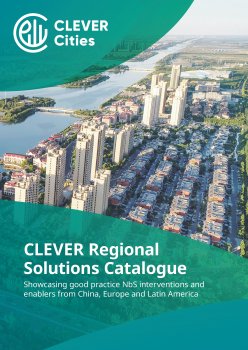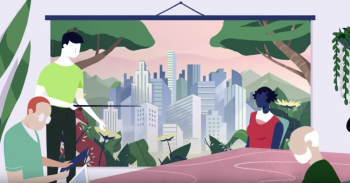Conexus Life-Lab Factsheet Series: Francia Street Rain Gardens: SuDS Implementation
The Municipality of General San Martín (MGSM), Buenos Aires, led a project to build linear Rain Gardens (RGs) along Francia Street as part of a Sustainable Urban Drainage System (SuDS) to manage stormwater. As a novel technology for the region, the RGs proved to be cost-effective and socially
CONEXUS Policy Brief 10 - Nature Based Solutions for preventing urban sprawl in Latin America Contributions from Bogotá’s Sustainable Urbanisation efforts
This policy brief outlines the role of Nature-based Solutions (NbS) on mitigating challenges caused by urban sprawl in Bogotá, offering insights and recommendations to decision-makers interested in addressing socio-ecological challenges of urban-rural borders by employing NbS.
IUCN Global Standard for NbS
Nature-based Solutions (NbS) are a powerful ally to address societal challenges, such as climate change, biodiversity loss and food security. As the world strives to emerge from the current pandemic and move towards the UN Sustainable Development Goals, it is imperative that future investments in
OpenNESS Synthesis paper: Link between biodiversity and ecosystem services
As was stated in the OpenNESS proposal, the quantitative relationship between biodiversity, ecosystem functioning and ecosystem services is still poorly understood. It is still unclear under what circumstances an emphasis on ecosystem services in planning and decision making is (conceptually and
Narrative Methods Factsheet
Narrative methods aim to understand and describe the importance of nature and its benefits to people with their own words. By using narrative methods we allow the research participants (residents of a certain place, users of a certain resource, or stakeholders of an issue) to articulate the plural
OpenNESS Synthesis paper: Indicators for ecosystem services
An indicator is a quantitative measure which represents a complex system or phenomenon. Indicators are key elements in policies for goal formulation and evaluation of achievements, as well as simplification of information and communication. There is a long tradition of applying indicators in a
BiodivERsA guide on policy relevance and effective science-policy interfacing in research proposals
The objective of the present guide is to help researchers to: - Better understand what is policy relevance of research - Be aware of what the criteria are for evaluating policy relevance of research in BiodivERsA calls - Be able to more efficiently identify the most relevant policies and
How under-used space and infrastructure can become testbeds for new cities
This article is part of a series of articles based on the 14 Partnerships of the Urban Agenda for the EU. Structured around the three city dimensions of the New Leipzig Charter (the Productive, the Green, and the Just City), the articles link Partnerships’ actions and activities with other relevant
KPI analysis process for cities
When planning for nature-based solutions, it is important to map and analyse how they would fit within the wider strategy. Connecting Nature front runner cities Poznan, Glasgow and Genk have mapped their cities' nature-based solution exemplar against their cities strategic development
On the need for a multi-dimensional framework to measure accessibility to urban green
With the recent expansion of urban greening interventions, the definition of spatial indicators to measure the provision of urban greenery has become pivotal in informing the policy-design process. By analyzing the stability of the population and area rankings induced by several indicators of green
Kaunertal Valley field study - microbial assisted local seed mixtures to mitigate erosion on slopes
This video contains a visual explanation of the research work in Kaunertal Valley in the framework of the EU horizon 2020 PHUSICOS Project (PHUSICOS – ‘according to nature' solutions to reduce risks in mountain landscapes). Goal is to develop a height adapted and microbial assisted local seed
Guía para la Implementación de SbN en Quito
The application of NbS requires the involvement of a wide range of city agents: the policy makers, NGOs and residents They must be accompanied and involved along the way towards a greener city. We can not afford dispense with all existing local knowledge in our local communities. At the same time,
Why is Nature Restoration Critical for River Connectivity?
The EU Commission published its proposal for a new Nature Restoration Regulation in June 2022. In this context, IEEP and Ecologic Institute – as part of the Think Sustainable Europe network – published a series of thematic policy briefs to inform Members of the European Parliament and other
Interlace Agile Guidance
The purpose of this guidance document is to provide theoretical and practical guidance on achieving an agile transformation in a Research and Innovation project such as INTERLACE. The guidance document gives an introduction on the key values and principles of working agile, followed by an
NetworkNature Knowledge Brief: Taking nature-based solutions up the policy ladder - from research to policy action
This Knowledge Brief produced by NetworkNature aims to disentangle the complexities associated with the integration of research and policy with regards to nature-based solutions (NbS) implementation and mainstreaming. The brief provides an overview of the NbS knowledge gaps resulting from an
- Video
PHUSICOS: Snow avalanches at Capet Forest
The hazard at the site is from snow avalanches in the 'Midaou' avalanche path. The avalanches may reach the village of Barèges, and this has occurred numerous times in the past, the last event being in 2013. The slope and the release area have numerous old 'grey' protective
Connecting Nature communication, social media & events
In 2017, when Connecting Nature began, the concept of nature-based solutions was in its infancy. Since then, our partners have played an important role in creating and raising awareness about nature-based solutions and about the Connecting Nature Framework as a methodological approach to
Sub-urban Ecosystem Payments
Guidelines (including a toolkit) for assessing the value of the ecosystem services provided by natural areas/green infrastructure in suburban locations.
CLEVER Regional Solutions Catalogue
The CLEVER Regional Solutions Catalogue seeks to elevate the role of nature-based solutions (NbS) across the urban landscape. It aims to inspire uptake and continued energy for implementing Nature-based Solutions that meet the varied needs and requirements of modern cities.
The URBES project - European URban Biodiversity and Ecosystem Services
This animated movie entitled “What’s the role of nature? Scientists at the URBES project inspire sustainable urban planning for people and nature” shows the results of the ‘Urban Biodiversity and Ecosystem Services’ (URBES) research project funded by BiodivERsA. It presents the key research
- ‹ previous
- 15 of 48
- next ›



